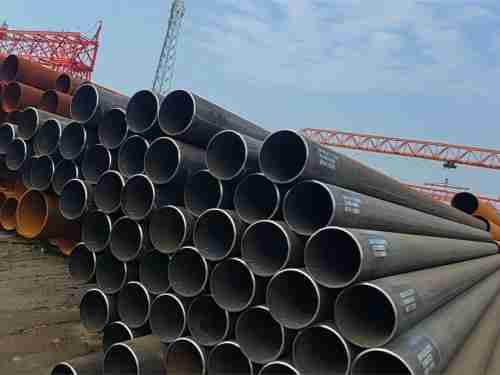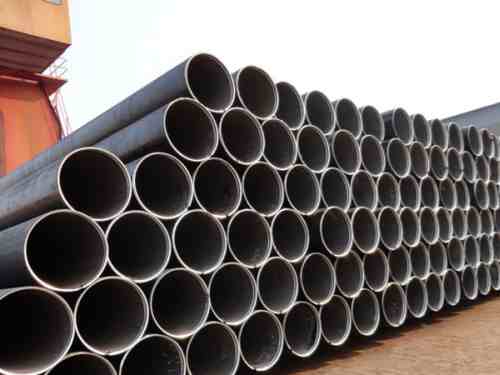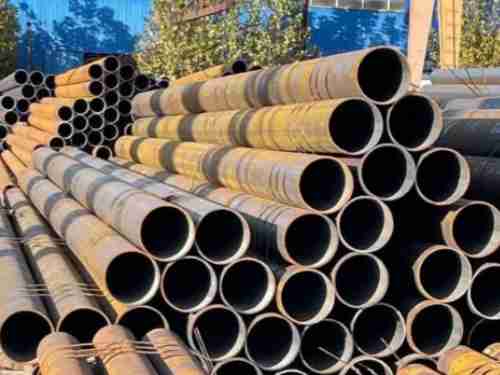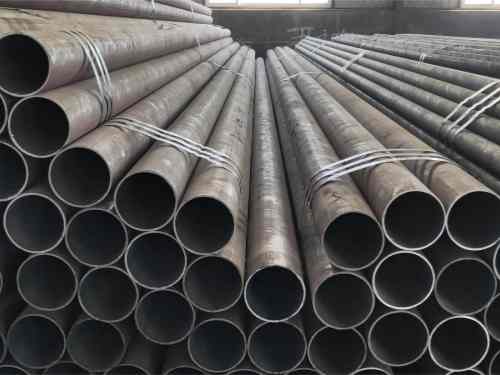The key Australian standard, AS 1074, or "AS 1074:2021 General Purpose Steel Pipe", outlines the requirements for a wide range of steel pipe applications. The main Australian non-governmental standards body is Standards Australia, which develops and maintains the standard. AS 1074 ensures that steel pipes used in everyday Australian services are safe, reliable and of high quality.
The AS 1074 steel pipe standard has been revised several times to keep pace with technological advances and changing industry requirements. The standard was originally designed to control quality and regulate the production process of steel pipes. The latest version was released in 2021 and incorporates the latest details as well as the most advanced production and testing technologies.
AS 1074 applies to all steel pipes, both welded and seamless. Due to their adaptability, these pipes require moderate strength and corrosion resistance. Under normal use, the standard covers pipes used to transport liquids such as water, air, gas, steam and oil.
Although AS 1074 contains extensive guidance on pipe manufacturing and quality control, it does not cover all aspects of pipe system design and installation. This is important to note. For some applications, other regulations or standards may need to be considered in addition to AS 1074.
It applies to threaded steel pipe and fittings specified in AS 1722.1, and plain-end steel pipe from DN 8 to DN 150.
There are also three wall thicknesses for steel pipe: thin wall, medium wall and thick wall.
Chemical Composition of AS 1074 Steel Pipe
The tubes shall be manufactured from steel which has a sulfur content of not more than 0.045 percent and phosphorus content of not more than 0.045 percent. The carbon equivalent, as calculated from the following equation, shall not exceed 0.4: Carbon Equivalent = C + Mn/6
| Elements of AS/NZS 1074 Pipes |
Max % |
| S |
0.05% |
| P |
0.045 |
| CE |
0.40% |
Mechanical Properties of AS 1074 Pipes
| AS/NZS 1074 Mechanical Properties |
Minimum Requirement |
| Yield Strength (MPa) |
195 |
| Tensile Strength (MPa) |
320 |
| Elongation (%) |
20 |
Dimensions and Sizes of AS 1074 Pipe
| Size |
Class |
O.D. (mm) |
W.T. (mm) |
Weight (Plain End) (kg/mtr.) |
Weight (Socketed) (kg/mtr.) |
Pcs/Bundle |
| DN |
Inch |
Min |
Max |
| 15 |
1⁄2″ |
L |
21 |
21.4 |
2.00 |
0.947 |
0.956 |
217 |
| 20 |
3⁄4″ |
L |
26.4 |
26.9 |
2.30 |
1.380 |
1.390 |
127 |
| 25 |
1″ |
L |
33.2 |
33.8 |
2.60 |
1.980 |
2.000 |
91 |
| 32 |
11⁄4″ |
L |
41.9 |
42.5 |
2.60 |
2.540 |
2.570 |
61 |
| 40 |
11⁄2″ |
L |
47.8 |
48.4 |
2.90 |
3.230 |
3.270 |
61 |
| 50 |
2″ |
L |
59.6 |
60.2 |
2.90 |
4.080 |
4.150 |
37 |
| 65 |
21⁄2″ |
L |
75.2 |
76 |
3.20 |
5.710 |
5.830 |
37 |
| 80 |
3″ |
L |
87.9 |
88.7 |
3.20 |
6.720 |
6.890 |
19 |
| 100 |
4″ |
L |
113 |
113.9 |
3.60 |
9.750 |
10.000 |
19 |
| 15 |
1⁄2″ |
M |
21.1 |
21.7 |
2.60 |
1.210 |
1.220 |
217 |
| 20 |
3⁄4″ |
M |
26.6 |
27.2 |
2.60 |
1.560 |
1.570 |
127 |
| 25 |
1″ |
M |
33.4 |
34.2 |
3.20 |
2.410 |
2.430 |
91 |
| 32 |
11⁄4″ |
M |
42.1 |
42.9 |
3.20 |
3.100 |
3.130 |
61 |
| 40 |
11⁄2″ |
M |
48 |
48.8 |
3.20 |
3.570 |
3.610 |
61 |
| 50 |
2″ |
M |
59.8 |
60.8 |
3.60 |
5.030 |
5.100 |
37 |
| 65 |
21⁄2″ |
M |
75.4 |
76.6 |
3.60 |
6.430 |
6.550 |
37 |
| 80 |
3″ |
M |
88.1 |
89.5 |
4.00 |
8.370 |
8.540 |
19 |
| 100 |
4″ |
M |
113.3 |
114.9 |
4.50 |
12.200 |
12.500 |
19 |
| 125 |
5″ |
M |
138.7 |
140.6 |
5.00 |
16.600 |
17.100 |
13 |
| 150 |
6″ |
M |
164.1 |
166.1 |
5.00 |
19.700 |
20.300 |
10 |
| 15 |
1⁄2″ |
H |
21.1 |
21.7 |
3.20 |
1.440 |
1.450 |
217 |
| 20 |
3⁄4″ |
H |
26.6 |
27.2 |
3.20 |
1.870 |
1.880 |
127 |
| 25 |
1″ |
H |
33.4 |
34.2 |
4.00 |
2.940 |
2.960 |
91 |
| 32 |
11⁄4″ |
H |
42.1 |
42.9 |
4.00 |
3.800 |
3.830 |
61 |
| 40 |
11⁄2″ |
H |
48 |
48.8 |
4.00 |
4.380 |
4.420 |
61 |
| 50 |
2″ |
H |
59.8 |
60.8 |
4.50 |
6.190 |
6.260 |
37 |
| 65 |
21⁄2″ |
H |
75.4 |
76.6 |
4.50 |
7.930 |
8.050 |
37 |
| 80 |
3″ |
H |
88.1 |
89.5 |
5.00 |
10.300 |
10.500 |
19 |
| 100 |
4″ |
H |
113.3 |
114.9 |
5.40 |
14.500 |
14.800 |
19 |
| 125 |
5″ |
H |
138.7 |
140.6 |
5.40 |
17.900 |
18.400 |
13 |
| 150 |
5″ |
H |
164.1 |
166.1 |
5.40 |
21.300 |
21.900 |
10 |
Manufacturing Tolerances of AS 1074
| AS 1074 Manufacturing Parameter |
Tolerances |
| Outer Diameter |
See the Dimension Table Above |
| Wall Thickness |
-8%, +unlimited (Light) |
| -10%, +unlimited (Medium and Heavy) |
| Straightness |
0.20% of Total Length |
| Mass |
± 4% |
| Unit Length |
± 0.08m |
Thickness Identification of AS 1074
Before leaving the manufacturer, tubes shall be distinguished by color at one end as per following table:
| Thickness Identification |
| Extra Light |
Green |
| Light |
Yellow |
| Medium |
Blue |
| Heavy |
Red |
Screw Threads of AS 1074
In order to ensure the Screw threads of all threaded tubes comply with AS 1722.1, it is essential that the fitting allowance plus gauge length for pipe threads of series R and RC for the particular nominal size, does not exceed 80% of the sum of the Light tube's basic length of useful thread. In some cases, low limits of outside diameter can result in "black" threads (perfect at the root and imperfect at the crest), but these should not be regarded as justification for rejection of the tubes. All tubes shall be supplied threaded with taper pipe threads.
Test and Inspections of AS 1074
– Leak Tightness Test
• Online NDT
• Hydro-test
– Bending Test
Tubes are an essential part of many industrial applications, and it is important that they be able to withstand certain loads and stresses. One such test is the bending test, which determines a tube's ability to resist fracture or failure under duress.
• Tubes ≤ DN50 – The test is carried out by placing the tube in a bending machine, with the weld at a 90 degree angle to the plane of bending. The tube is then bent cold around a former with a radius that is appropriate for the particular tube being tested. For ungalvanized tubes, this radius should be equal to 6 times the outside diameter of the tube; for galvanized tubes, it should be 8 times the outside diameter of the tube. If the tube does not crack or show any signs of failure during this process, it is considered to have passed the test.
• Tubes > DN50 – According to the given specifications, for finished tubes that are larger than DN50 in diameter, rings cut from the end of the selected tubes must be at least 40mm in length and be able to be flattened between two parallel plates. The weld, if there is one, should be at a 90 degree angle in relation to the point of maximum bending. Additionally, no opening or fracture should occur in the weld until the distance between the plates is less than 75% of the original outside diameter of the tube. There should also be no cracks or breaks in the metal occurring elsewhere until the distance between the plates is less than 60% of the original outside diameter of the tube. As appropriate, test rings may have their inner and outer edges rounded.

 English
English Español
Español











